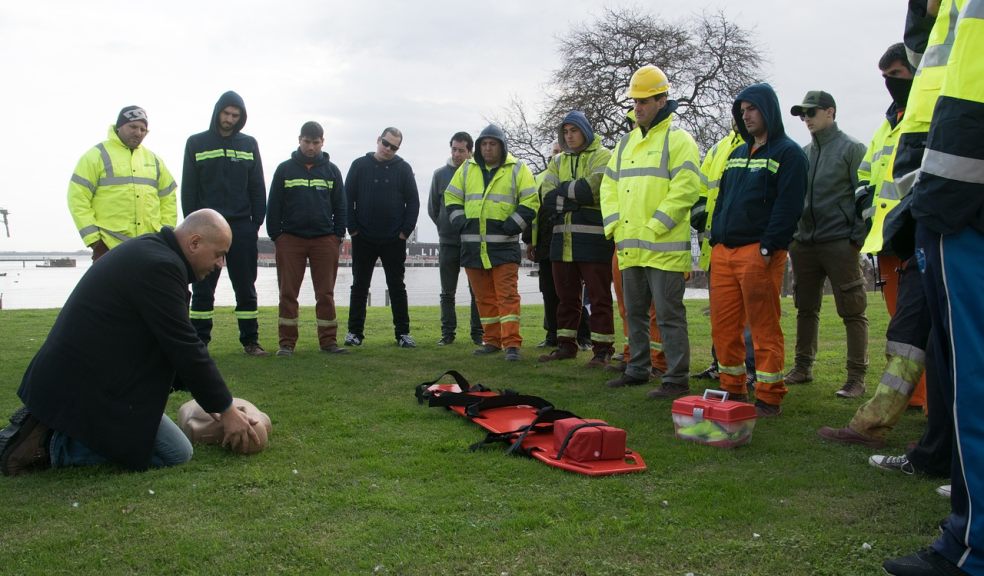
Tips For Building A Safer Workplace Environment For Your Team To Thrive Within
Creating a safe workplace is foundational to any business’s success. It goes beyond compliance with health and safety regulations; it’s about fostering an environment where every team member can thrive. By adopting a multifaceted strategy that includes everything from ergonomic practices to mental health support, businesses can cultivate a workspace that meets and exceeds the standard safety requirements.
Here are some practical steps and strategies to enhance safety across all workplace dimensions, ensuring your team feels secure and empowered to perform at their best.
Understanding The Spectrum Of Workplace Safety
Workplace safety is a multifaceted concept that extends beyond the physical to include the psychological well-being of employees. Leaders have to adopt a holistic approach, recognising that a truly safe workplace is one where physical hazards are minimised and mental health is nurtured. Regularly reviewing workplace practices and environments for potential hazards while fostering a supportive atmosphere ensures that safety becomes a core part of the company culture, not just a checklist.
Physical Safety Measures
Ensuring the physical safety of a workplace is a multi-layered process that requires constant vigilance and proactive management. Regular, thorough risk assessments help to identify and mitigate potential dangers that could arise from machinery, the layout of the office, or daily work routines. Implementing ergonomic solutions enhances comfort and minimises the risk of strain and injury, promoting a healthier, more productive workplace.
The provision of appropriate safety equipment should be tailored to the specific needs of different roles within the company, ensuring all employees are adequately protected. Furthermore, clear signage to indicate hazards and well-maintained facilities are essential in preventing accidents. These measures create a safer environment, demonstrating a tangible commitment to the team’s well-being.
Being Prepared: The Importance Of First Aid Training
Preparedness in the workplace transcends beyond having the right tools; it encompasses the readiness to handle situations that we hope never arise. First aid training is a prime example of this philosophy in action, providing employees with the knowledge and skills necessary to respond confidently to emergencies.
Such training is invaluable, offering the potential to save lives and fostering a sense of security and preparedness that permeates the workplace. Partnering with Safe Haven Training for comprehensive first-aid instruction is strategic. This demonstrates an investment in the team’s safety and well-being and highlights the organisation’s deep commitment to maintaining a secure, health-conscious work environment.
Empowering Employees With Knowledge And Skills
Equipping employees with the knowledge and skills necessary for emergency preparedness is invaluable. First aid training, in particular, is a crucial aspect of workplace safety, empowering individuals to take immediate action in the event of an accident. Businesses should aim to provide comprehensive first-aid training that covers a wide range of scenarios, ensuring that every team member can confidently offer crucial care in critical moments.
Beyond first aid, it’s beneficial to include training on using safety equipment correctly and conducting emergency drills regularly. This not only prepares the team for a variety of situations but also reinforces the importance of safety in the workplace. Encouraging a culture where continuous learning is valued adds security, as employees remain up-to-date with the latest safety practices and procedures.
Fostering Mental Well-being
Mental health is equally important in creating a safe working environment. Leaders are crucial in championing a work culture that values and promotes mental well-being. This involves creating an environment where work-life balance is respected and encouraged, making mental health resources accessible to all employees.
Open conversations about mental health should be normalised, allowing employees to express concerns and seek help without fear of stigma. Such initiatives support individual well-being and foster a sense of community and collective resilience, significantly contributing to the productivity and harmony of the team.
Creating A Culture Of Safety Awareness
Developing a culture where safety awareness is second nature requires deliberate actions and commitment from all levels of an organisation. Educational training sessions that detail safety protocols and emergency response techniques are fundamental in equipping employees with the knowledge they need to navigate potential risks.
Leadership is pivotal in modelling these behaviours, demonstrating a genuine commitment to safety through active participation in safety programs and acknowledging those who exemplify best safety practices. Encouraging a proactive stance on safety, where each team member feels empowered to voice concerns and contribute ideas for improvement, strengthens the safety culture, making the workplace more inclusive and engaged.
Regular Reviews And Continuous Improvement
Approaching workplace safety as an ongoing commitment rather than a one-time initiative is essential for maintaining a secure environment. Regular audits and reviews of safety policies and procedures are crucial to identify areas for improvement and adapt to any changes in the workplace or workforce. Involving employees in these reviews can provide new insights and foster a culture of collective responsibility for safety.
Feedback mechanisms, such as suggestion boxes or regular safety meetings, encourage open dialogue and allow for the incorporation of employee suggestions into safety strategies. Continuous education on safety standards and updates ensure the entire team is informed and engaged in creating a safer workplace.
Building a safer workplace is an ongoing process that requires commitment from every level of the organisation. Such an approach benefits individual team members and contributes to the sustained success and resilience of the business as a whole.













